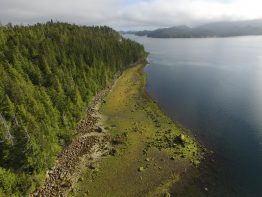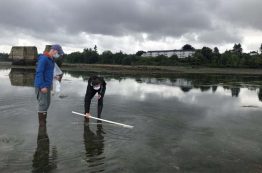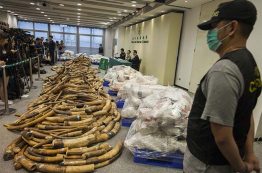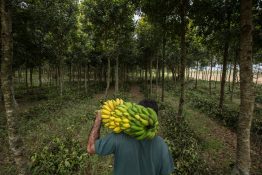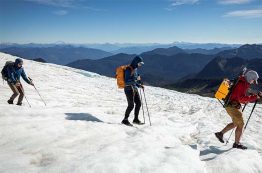Indigenous people have been stewarding the ocean for thousands of years. This stewardship has appeared in many different forms around the world, all of which represent a reciprocal relationship between humans and the sea rooted in deep, place-based knowledge. From octopus houses in Haida Gwaii to fish ponds in Hawai’i, an Indigenous mariculture renaissance is making waves as groups across the Pacific seek to revitalize these ancient techniques and traditions.
Read more at Washington Sea Grant »eDNA a useful tool for early detection of invasive green crab
European green crabs feast on shellfish, destroy marsh habitats by burrowing in the mud and obliterate valuable seagrass beds. The invasive species also reproduces quickly, making it a nightmare for wildlife managers seeking to control its spread in Washington’s marine waters. Last month, Gov. Jay Inslee issued an emergency order in response to more than 70,000 crabs caught on Lummi Nation land as well as dramatic increases in crab populations on Washington’s outer coast and other locations in Puget Sound in recent years.
Read more at UW News »New Center for Environmental Forensic Science aims to disrupt and dismantle international illegal wildlife trade
Across the globe, endangered species are at risk for illegal poaching. African elephants are sought out for their ivory, rhinoceros for their singular horns, and armadillo-like pangolins for their protective, brittle scales. Add to that list valuable and environmentally sensitive trees illegally harvested throughout the world where entire ecosystems are being deforested and illegal, unreported and unregulated fishing that is devastating oceans.
Read more at UW News »Planting trees in pastureland provides significant cooling in the tropics
Farmers struggling to adapt to rising temperatures in tropical regions can unleash the benefits of natural cooling, alongside a host of other wins, simply by dotting more trees across their pasturelands. For the first time, a study led by the University of Washington puts tangible numbers to the cooling effects of this practice. Researchers at the UW and The Nature Conservancy, along with Duke University, the University of California San Diego and Stony Brook University Hospital, find that adding trees to pastureland, technically known as silvopasture, can cool local temperatures by up to 2.4 C (4.3 F) for every 10 metric tons of woody material added per hectare (about 4 tons per acre) depending on the density of trees, while also delivering a range of other benefits for humans and wildlife.
Read more at UW News »Glaciers are squishy, holding slightly more ice than thought
Glacier ice is usually thought of as brittle. You can drill a hole in an ice sheet, like into a rock, and glaciers crack and calve, leaving behind vertical ice cliffs. But new University of Washington research shows that glaciers are also slightly compressible, or squishy. This compression over the huge expanse of an ice sheet — like Antarctica or Greenland — makes the overall ice sheet more dense and lowers the surface by tens of feet compared to what would otherwise be expected, according to results published Jan.
Read more at UW News »
